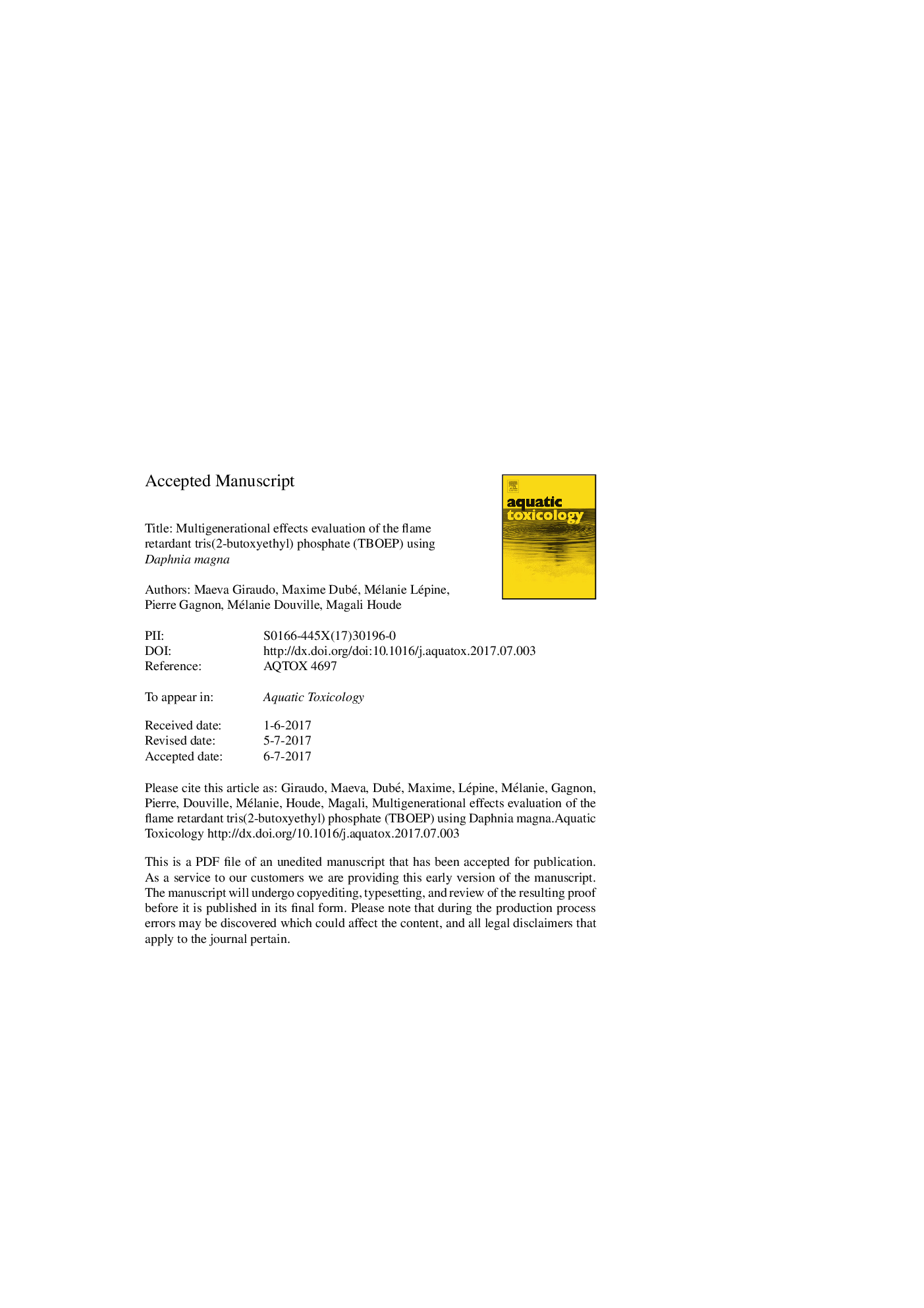| Article ID | Journal | Published Year | Pages | File Type |
|---|---|---|---|---|
| 5764277 | Aquatic Toxicology | 2017 | 25 Pages |
Abstract
Tris(2-butoxyethyl) phosphate (TBOEP) is an organophosphate ester used as substitute following the phase-out of brominated flamed retardants. Because of its high production volume and its use in a broad range of applications, this chemical is now frequently detected in the environment and biota. However, limited information is available on the long-term effects of TBOEP in aquatic organisms. In this study, Daphnia magna were exposed over three 21d generations to an environmentally relevant concentration of TBOEP (10 μg/L) and effects were evaluated at the gene transcription, protein, and life-history (i.e., survival, reproduction and growth) levels. Chronic exposure to TBEOP did not impact survival or reproduction of D. magna but affected the growth output. The mean number of molts was also found to be lower in daphnids exposed to the chemical compared to control for a given generation, however there were no significant differences over the three generations. Molecular responses indicated significant differences in the transcription of genes related to growth, molting, ecdysteroid and juvenile hormone signaling, proteolysis, oxidative stress, and oxygen transport within generations. Levels of mRNA were also found to be significantly different for genes known to be involved in endocrine-mediated mechanisms such as reproduction and growth between generations F0, F1, and F2, indicating effects of parental exposure on offspring. Transcription results were supported by protein analyses with the significant decreased in catalase (CAT) activity in F1 generation, following the decreased transcription of cat in the parental generation. Taken together, these multi-biological level results suggest long-term potential endocrine disruption effects of TBOEP in D. magna exposed to an environmentally relevant concentration. This study highlights the importance of using chronic and multigenerational biological evaluation to assess risks of emerging chemicals.
Keywords
Related Topics
Life Sciences
Agricultural and Biological Sciences
Aquatic Science
Authors
Maeva Giraudo, Maxime Dubé, Mélanie Lépine, Pierre Gagnon, Mélanie Douville, Magali Houde,
